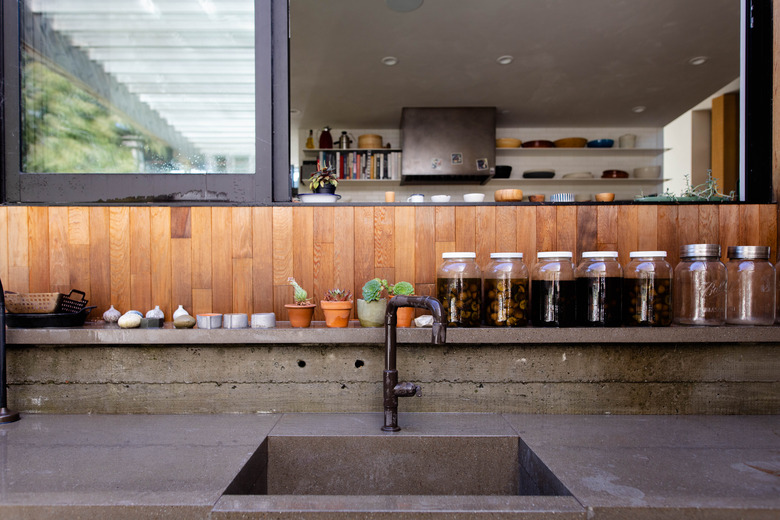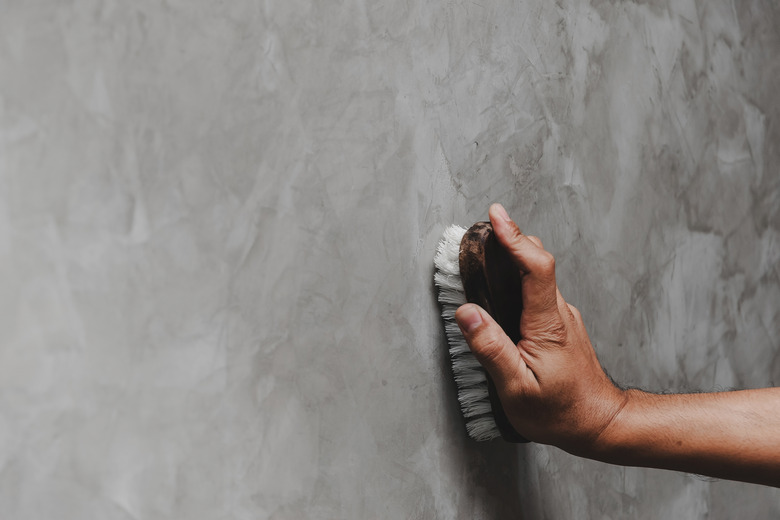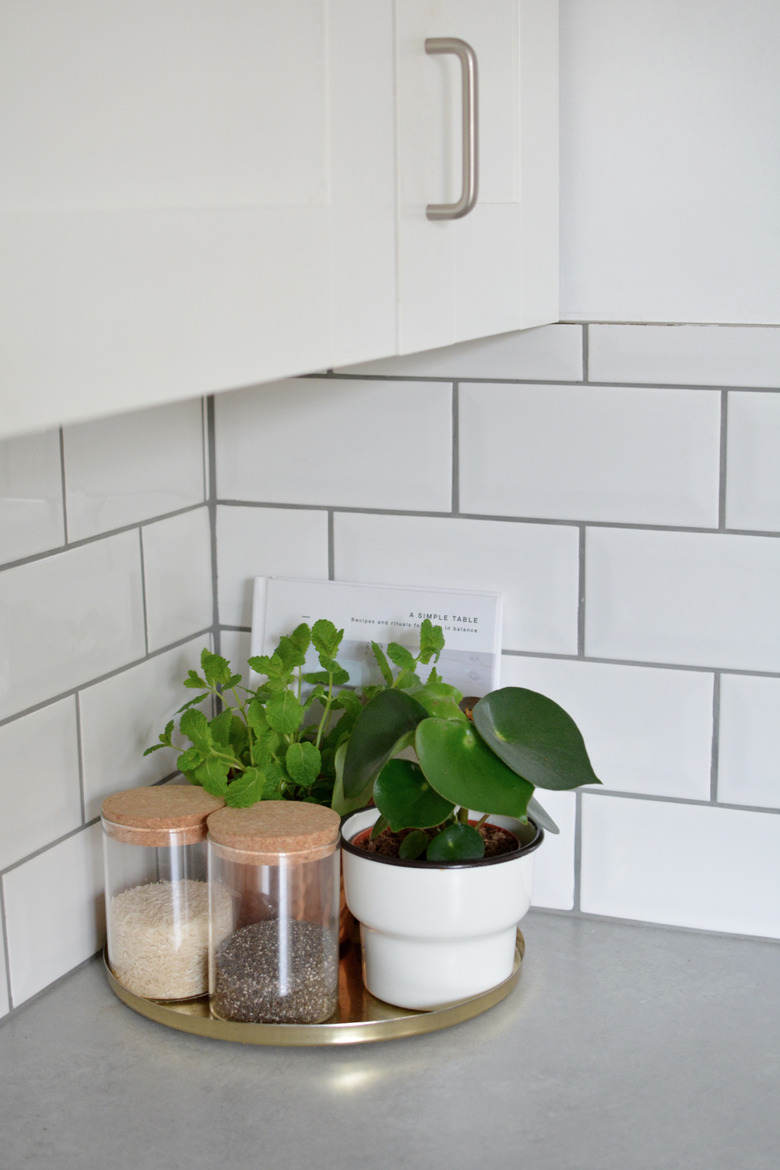How To Clean Concrete Countertops
Most of the time, it's easy to clean concrete countertops. A little warm water and dish soap typically get the job done, especially if you've kept up with your countertop fabricator's sealing instructions. Life happens, however, and that sometimes means falling behind on your counter-sealing duties. Even if you have sealed your counter, some stains can penetrate the sealer if they're allowed to sit too long.
Fortunately, when soap and water don't do the trick, there are other cleaning methods you can use. Do so cautiously, however, and always test cleaners and stain removers in an inconspicuous area before slathering them across your concrete countertop. You never know how a chemical will react with any sealer or pigment on your countertop until you try it.
Concrete Sealers and Stains
Concrete Sealers and Stains
Concrete countertops are porous, which means stains can seep into them and prove quite difficult to remove. You can work to prevent stains by cleaning up spills as soon as they happen and by applying a sealer to the countertop. Sealing the countertops prevents stains by creating a barrier between the concrete and any items you place on its surface. Think of it as a kind of force field.
Unfortunately, some concrete sealers need to be reapplied periodically. How often depends on the specific sealing product you've chosen, but it can be easy to lose track and fall behind. It's also possible for some spills to eat through the sealer, allowing stains to penetrate your concrete despite your diligent sealing. This is especially likely when a stain is allowed to rest on the counter, like that time your child left spilled orange juice sitting on the counter all day.
When your sealer is intact, you actually remove stains from it and not the concrete itself. You'll need to choose a mild cleanser or detergent that won't discolor or mar the sealant. If the stain has penetrated the concrete itself, it may be necessary to sand the stain away and then reseal the concrete.
Dark Stains on Concrete Countertops
Dark Stains on Concrete Countertops
It's not always easy to clean concrete countertops when they contain dark stains like wine, grape juice, fruit punch or mustard. Bleach works best on these types of stains, but it can react with concrete sealers and dyes. This is why it's important to test cleaners like bleach on a small, hidden area of the countertop. If the bleach causes any damage, you'll know not to use it on the rest of your countertop and to try another cleaner instead.
Begin by soaking a cotton ball or paper towel in bleach. Place the cotton or towel directly on the stain and then set a heavy glass on top to push the bleach against the countertop. The Concrete Network recommends leaving the bleach in place for five to 10 minutes before removing the glass and rinsing away the bleach. Some stains may take longer to fade, however, and you may need to leave the bleach in place for up to 60 minutes.
Removing Oily Stains
Removing Oily Stains
Shortening, butter, fries and other greasy foods can leave dark oil stains on your countertop long after the food itself is gone. If the oil has soaked into your countertop, you'll need to make a poultice to pull it back out. A poultice is simply a mixture (usually a thick paste) that contains a solvent to loosen the oil and a powder to absorb it and soak it up.
To make a poultice, combine baking soda, acetone and powdered sugar or flour until you get a spreadable consistency. Apply the poultice to your concrete countertop and cover the area with plastic wrap. Tape down the plastic wrap to lock in the moisture and give the acetone time to work. In 24 hours, remove the plastic wrap and let the poultice dry out completely. Clean away the poultice with a damp cloth and repeat the application if necessary.
If desired, Downing Designs suggests making your poultice of flour and hydrogen peroxide. Hydrogen peroxide adds some bubbling to the mix but also works as a bleaching agent. This can help remove the stain but may cause discoloration. Again, it's important that you apply the mixture to a discrete area and test it before using it on your stain.
Dealing With Acidic Stains
Dealing With Acidic Stains
Some stains aren't really stains at all. You may not be able to just clean concrete countertops if the discoloration on them was left behind by tomatoes, lemon juice or other acidic foods. In this case, it's possible that the food etched your countertop rather than just staining it.
To remove these marks, begin by washing the area with warm water and some dish soap or laundry detergent. When it's dry, wet some 800-grit sandpaper and sand the area until the discoloration is gone. If your countertop was properly sealed, you should need to only sand away the sealant. If it wasn't or if the acid soaked through the sealer, you may need to sand away the topmost layer of concrete.
When you're done removing the stain, give your entire countertop a light sanding. This will rough up any old sealer and help new sealer stick. Rinse away any sanding dust and then seal your countertop again. This will both reseal your countertop and blend the area where you sanded away the sealer to deal with the etching.
Avoiding Concrete Countertop Catastrophes
Avoiding Concrete Countertop Catastrophes
Concrete counters are tough, but they do require a bit more TLC than some people realize. It bears repeating that you should always test any cleaners on an inconspicuous area to make sure they're safe for your counter. Never use stiff brushes or scratchy sponges to scrub your countertops, as doing so may scratch the finish. Avoid ammonia, vinegar and any acidic cleaners. Instead, opt for pH-neutral cleansers or wipes like those used to clean granite surfaces.
As is true with most countertops, always use a cutting board instead of cutting directly on your concrete counter in order to avoid scratches. Be careful about setting hot pots and pans on the surface, as this can crack concrete or discolor the concrete sealer. Shoo away houseguests who lean on the edges of your countertop, as broken edges are unsightly and give stains an unsealed access point.


